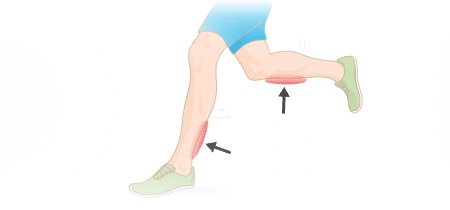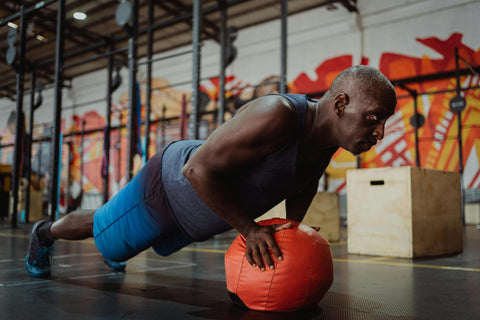
HOW TO COMBAT SHIN SPLINTS?
In simple terms, pain along the shin (Tibia) bone is referred to as Medial Tibial Stress Syndrome or Shin Splints, so it is important for every sportsman to know how to combat shin splits.
This (shin) bone is located at the front of your lower leg. From runners to athletes and dancers to those starting a fitness program, it is quite common in sports. According to the British Journal of Sports Medicine, it is a clinical pain condition that is induced by repetitive exercise or overuse of your muscles, tendons in legs having an incidence rate of 4-19% in athletes, and that of 13-20% in runners.

Combating shin splints
Your vulnerability increases if you run or jump on hard surfaces, have an inappropriate running technique, or have started exercising after being inactive for some time. With these basics known, we take a look at the most basic prevention mechanisms you can adopt to reducing the chances of having shin splints.
Keeping the Body Prepared
As posed in a number of research available on ScienceDirect, it is highly recommended to having a graded running exposure program, i.e., avoiding sudden increases in your physical activity. The sudden increase can be that of intensity, duration or frequency. This is the most useful way to avoiding the risks of shin splints in any kind of sport.
You have to build your exercise routines gradually, beginning with low-intensity strengthening exercises, those which help you stretch your calves and hamstrings and the ones which strengthen your hip muscles.
Similarly, try running on softer and even surfaces if you can, as it will lessen the level of force that your body (bones, muscles, tendons) have to absorb as opposed to running on harder surfaces. For instance, grass, fields, synthetic tracks are advised by experts than going for a run on sidewalks or roads, especially when only just starting out.
Using Safety Gear
A number of safety shoes and equipment is available in the market, boosted as the most effective prevention tool against shin splints. From shock-absorbing insoles to foam-heel pads, in actual fact, there is little objective evidence to support any of the shoes available. Still, the Journal of Family Practice recommends using these shoes as one of the ways to reduce of chances of having shin splints.
More specifically, MayoClinic recommends changing your shoes between every 350-500 miles. This is the distance where most of the shoes available in the market lose up to 40% of their shock-absorbing capabilities. Most routine runners keep a pair of shoes in their kits, which they rotate regularly.
Getting Help from Experts
This is very helpful if you engage in high-energy exercises or sports. Physical therapists, trainers, fitness instructors; anyone can be reached out when planning a progression of your fitness or exercise program. First, looking at your movement patterns can help you in the analysis of your running, jumping or landing techniques.
Then depending on your body’s reaction and the muscular structures (thickness or otherwise), they can advise you on the most useful stretching or strengthening exercises or the best cross-training to reduce shin splint hazards during your routines. They are the ones who will inform you if you have flat feet or high arches, which are also included as risk factors of repeated shin splints.
While suffering from a case of shin splints, in case the pain gets severe or you hurt your shin, dial 112 or 999 or visit NHS111online to get advice from experts.
Avoid Any Activity That Provokes Symptoms
While it is one of the most common sports injuries, the treatment of shin splints is mostly conservative. Therefore, the foremost response to an early indication of shin splints is the temporary reduction or cessation of activity that induced it in the first place.
As suggested by the US National Library of Medicine, a break of 2-4 weeks is required from your usual activity or exercise immediately after getting the shin splints. But to continue with the fitness regime, one can revert to gentle exercises as suggested by NHS. Alongside rest, in case of any slight indication of shin splints, using ice is always helpful in reducing stress and swelling.
Other approaches like ultrasound therapy, balance training, acupuncture, shockwave therapy and the use of orthotics, are also quoted to be useful. However, when evaluating different claims on how to combat shin splits, the efficiency of each approach is yet to be evaluated by any in-depth academic research.
About the Author

Qurat Shahzad
Qurat-ul-Ain is a dedicated writer who likes to write anything and everything.



